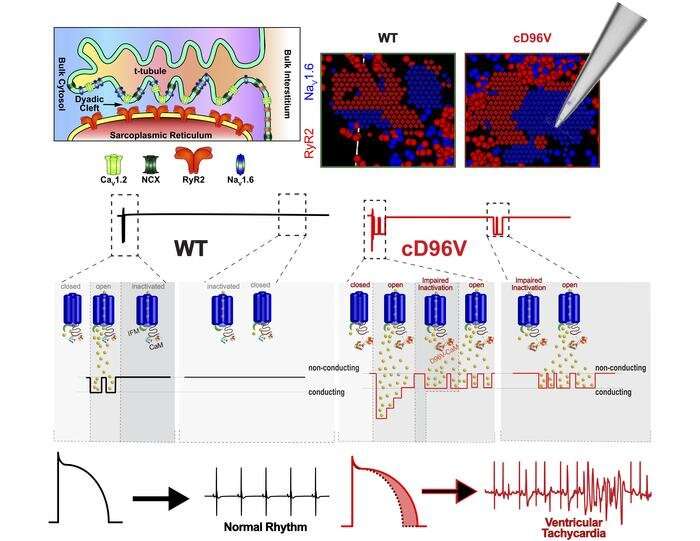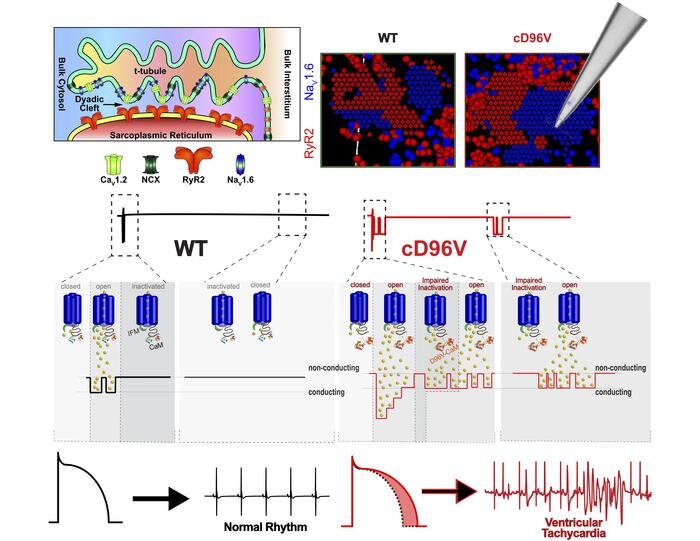
A study by researchers at The Ohio State University reveals new insights into the cause of certain cardiac arrhythmia disorders. The findings may lead to new treatments.
The study focused on a protein called calmodulin, which is found in many organs of the body. In the heart, calmodulin is critical for ensuring the generation of a proper heartbeat. The protein helps regulate the movement of charged sodium and calcium molecules into and out of heart-muscle cells, an exchange that produces the rhythmic beating of the heart. It also generates the electrical activity that is measured during an electrocardiogram.
Recent research has shown that mutations in calmodulin can cause severe heart rhythm disorders called calmodulinopathies, which are often fatal. Currently, there are no effective treatments for calmodulinopathies because researchers have a poor understanding of how calmodulin mutations cause arrhythmias.
In this study, Ohio State researchers in the colleges of Pharmacy, Medicine and Engineering used an animal model to show that a mutated form of calmodulin called D96V-CaM contributes to arrhythmias. The mutated protein facilitates the flow of sodium ions through molecular channels in heart-muscle cells, resulting in the abnormal release of calcium ions.
The researchers published their findings in the Journal of Clinical Investigation.
“This study reveals a previously unrecognized calmodulin-mediated dysregulation of sodium channels, which contributes to calmodulinopathy,” said principal investigator Przemysław Radwanski, assistant professor of Outcomes and Translational Sciences in the Ohio State University College of Pharmacy. “Our findings may lead to the development of new therapies that are based on existing drugs to treat a severe congenital heart disorder that today is incurable.”
Radwanski and his collaborators used a genetically engineered mouse model to test whether targeting the affected sodium channels might offer a treatment for calmodulinopathy.
Key findings included:
- The mutated calmodulin D96V-CaM impairs a particular sodium channel called NaV1.6;
- D96V-CaM does not affect the most common sodium channel in heart muscle, called NaV1.5;
- D96V-CaM promotes cardiac arrhythmias by causing the abnormal release of calcium ions.
“By understanding calmodulin-related heart diseases, we aim to discover approaches that will prevent arrhythmias that stem not only from calmodulin mutations but also from abnormal sodium-channel function, as seen in patients with congenital and acquired arrhythmia syndromes,” Radwanski said.
More information:
Mikhail Tarasov et al, NaV1.6 dysregulation within myocardial T-tubules by D96V calmodulin enhances proarrhythmic sodium and calcium mishandling, Journal of Clinical Investigation (2023). DOI: 10.1172/JCI152071
Journal information:
Journal of Clinical Investigation
Source: Read Full Article



